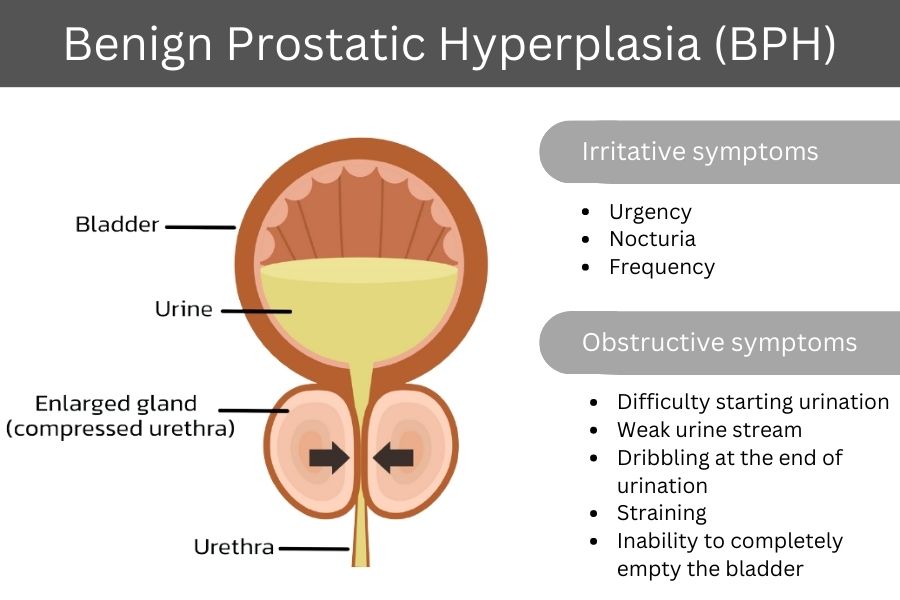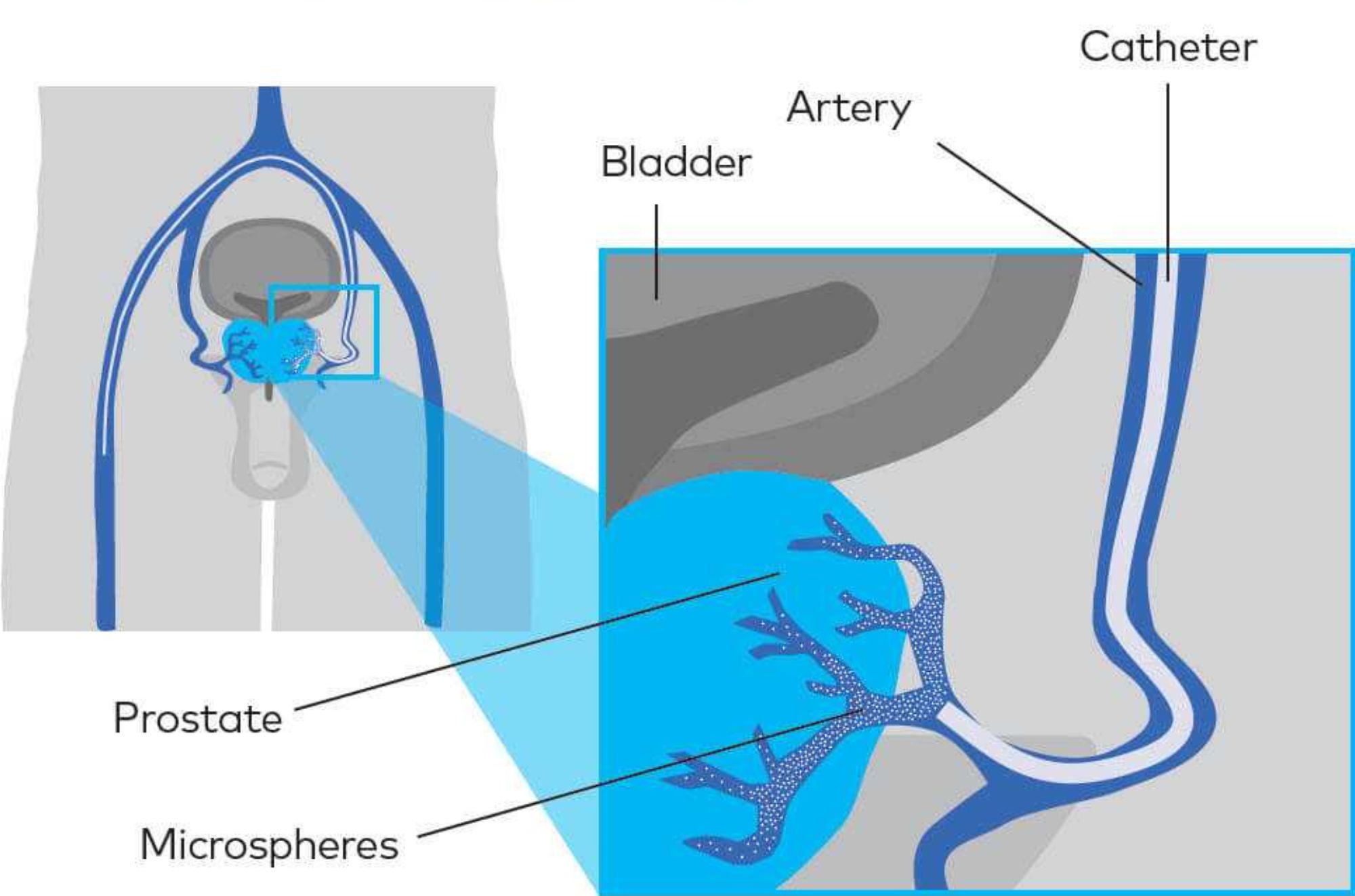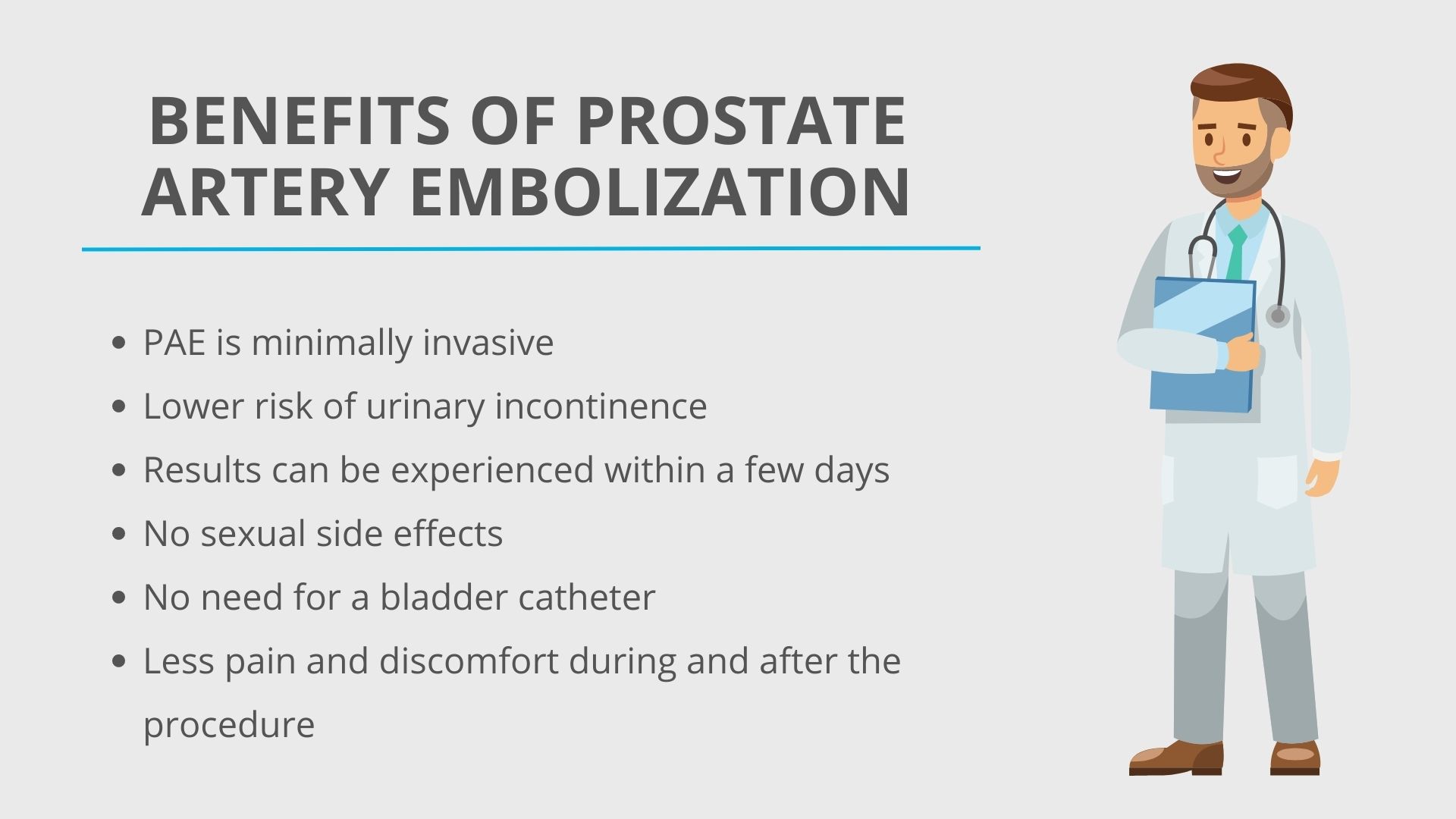Enlarged Prostate/ Benign Prostatic Hyperplasia (BPH)

A Non-Surgical Option for Effectively Treating An Enlarged Prostate
Benign Prostate Hyperplasia (BPH), is a noncancerous enlargement of the prostate gland and is the most common benign tumor found in men. In fact, BPH symptoms are present in approximately 25% of men by age 55, and in 50% of men 75 years and older.
The exact cause of BPH is not fully understood, but it is believed to be related to changes in hormone levels, which would increase levels of dihydrotestosterone (DHT), a hormone derived from testosterone.
In BPH, the prostate gland grows in size, which can cause it to press against the urethra (the tube that carries urine from the bladder out of the body) and interfere with the normal flow of urine.

BPH can significantly impact a man’s quality of life, and treatment may be necessary to relieve symptoms.
Treatment options for BPH include medication, Prostate Artery Embolization, and surgical options such as Transurethral Resection of the prostate or Open Prostatectomy.
Treatment: Prostate Artery Embolization
Prostate Artery Embolization (PAE) is a non-surgical alternative used to treat an enlarged prostate gland that is not responding well to medication. PAE has been shown to be effective in reducing the size of the prostate gland, relieving urinary symptoms, and improving quality of life in men with enlarged prostate glands.
Pre-Procedure Work Up
Before the procedure, there are some essential steps we take to ensure everything goes smoothly. First, we schedule a clinic visit where we discuss all the details thoroughly. We arrange for a CT Angiogram of the pelvis to map out the arterial anatomy, an important part of our pre-procedure planning. This CT exam can be conducted on a different day at a time and place convenient for the patient.
The Procedure
While sedated, a catheter is inserted into the femoral or radial artery guided by fluoroscopy. Tiny particles are injected through the catheter to block the blood flow to the prostate gland, causing it to shrink in size over the next 1 – 2 months with continued improvement up to 5 – 6 months after the procedure.
Prostate Artery Embolization is a minimally invasive therapy that does not require surgery, decreasing recovery time. It is considered a safe procedure with low risks of complications such as bleeding or infections.
Post-Procedure Follow Up
Prostate artery embolization is typically performed on an outpatient basis within a hospital setting. Patients are discharged a few hours following the procedure. While a Foley catheter is often utilized during the procedure, it is usually removed before patients are discharged, unless they have a history of acute urinary retention necessitating ongoing catheter management.
Following the procedure, medications are prescribed to alleviate bladder spasms and pelvic pain, which may persist for 3-5 days. While post-procedural discomfort is to be expected, it is generally milder compared to that experienced after surgery. Most patients begin to notice a gradual improvement in symptoms around 2 weeks post-procedure.
Follow-up care typically involves a telephone check-in within the first week, followed by a clinic visit 4-6 weeks after the procedure.
The Best Candidates for PAE Are Men Who:
- Have urinary incontinence, which can range from some leaking to complete loss of bladder control
- Have to urinate frequently, with urgency, and have pain while urinating
- Are unable to completely empty the bladder

Insurance Coverage
Nearly all insurance companies, including Medicaid and Medicare, will cover Prostate Artery Embolization.
Our team will work with insurance companies to verify coverage for your consultation as well as any procedures you may require.
The Next Step
Patients who are interested in Prostate Artery Embolization should contact their healthcare provider who will work with our TRA Endovascular team on a plan to evaluate and treat your condition.
Have Questions?
Contact UsAdditional Resources: Radiologyinfo.org
